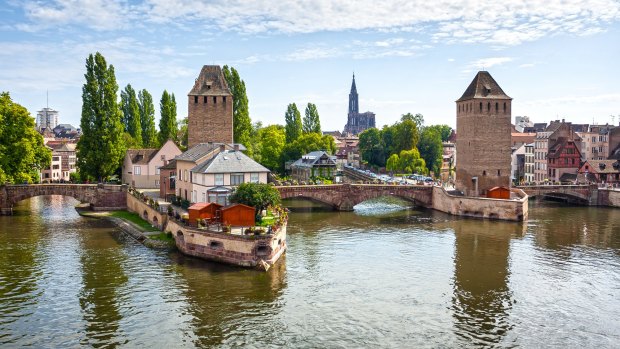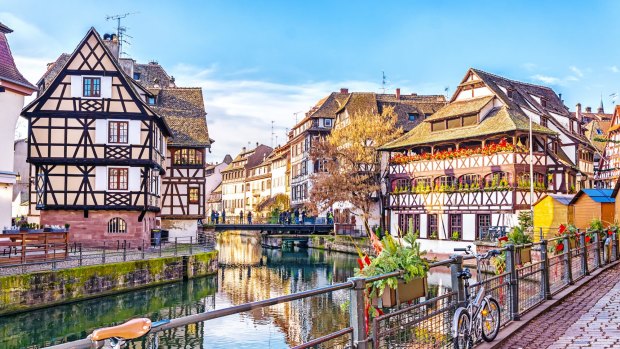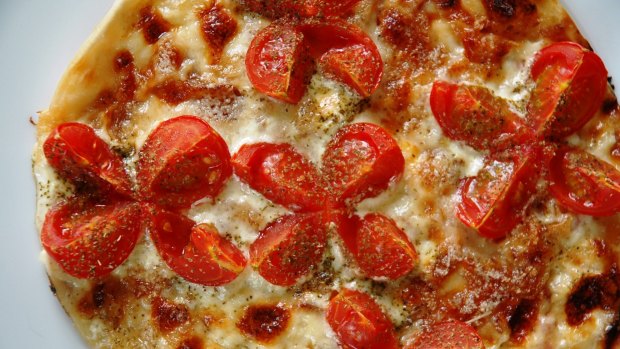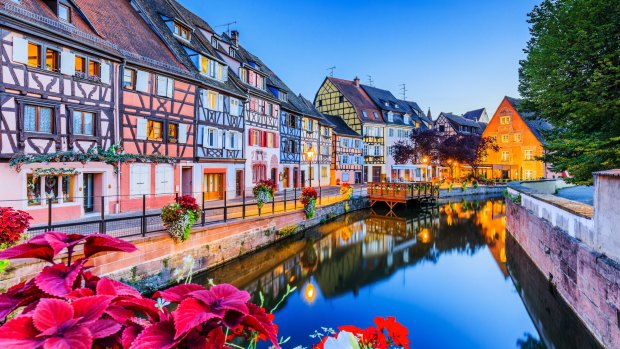This was published 5 years ago
Strasbourg, France: Architecture, culture and great gingerbread
By Keith Austin

Strasbourg, France.
Strasbourg is one of the capitals of the European Union, along with Brussels and Luxembourg. It is home to the Central Commission for Navigation on the Rhine, the Council of Europe, the International Institute of Human Rights, the European Ombudsman of the European Union and the International Commission on Civil Status.
As such it is with a heavy heart that I leave the opulence of the Avalon Imagery II on day 3 of our Rhine cruise and slip aboard the canal boat that's taking us sightseeing to what I imagine is a local council sub-committee meeting made flesh. Spotty rain and grey skies echo my mood.
It's not long, though, before our guide is expounding on syphilis and public executions (on the wonderfully Poe-esque Raven Bridge) - which is enough to make anyone's ears prick up, I'm sure you'd agree.

Christmas gingerbread.
Strasbourg celebrated its 2000th anniversary in 1988. It started out in 12BC as a Roman encampment called Argentoratum. How it went from that mouthful to "Strasbourg" is another story but like much of this Rhineland area it's had a chequered career. Once owned by a bunch of bishops, it became a free imperial city in 1262, turned French in 1681, German in 1871, French again in 1918, German in 1940 and French again in 1944.
This topsy-turvy Arthur-or-Martha existence has, in the historic city centre, created something of an architectural hotch-potch of pretty half-timbered gingerbread-style houses and higgledy-piggledy cobblestone streets and alleyways. Honestly, it should be framed and hung on a wall.
It should also be noted that it's pretty much entirely contained on the Grande Île, an island surrounded on one side by the Ill River and on the other by the Canal du Faux-Rempart. It was named a UNESCO World Heritage Site in 1988, noting that it has "an old quarter that exemplifies medieval cities".

Strasbourg in France started out in 12BC as a Roman encampment called Argentoratum.
None of this is overly obvious from the boat until we get to the lock at the northern end of the island where the canal opens out and, on ascending to the higher water way, we get an idea of the architecture. Here, teetering on the water's edge, are half-timbered, multi-storey buildings topped with steeply-pitched beaver-tail tiled roofs punctuated with dormer windows. Today, of course, they're festooned with flower boxes and contain shops, restaurants and bars. It's all perfectly pulchritudinous but, as our guide explains, this is La Petite France and it was once all very different.
First off, this was the former tanners' district, avoided and derided in equal measure because of the way in which cow hides were turned into leather – a method which included the use of dung, lime and urine – and then hung to dry in the street. It was quite literally on the nose.
Secondly, the very name itself comes from a hospital here which housed French soldiers suffering from syphilis – a disease then charmingly known in German as the Franzosenkrankheit (the French disease). Et voila, La Petite France was born.

Flammekuche is a pizza-like Alsatian tart.
We circumnavigate the island, taking in the Ponts Coverts, the Barrage Vauban (a 17th-century dam) and another lock, before going ashore and walking through the slender streets to the Gothic magnificence of the Cathedrale Notre Dame de Strasbourg and its astronomical clock.
The current clock (there have been three) dates from 1843. It's a big old thing tucked away in a far corner and features various religious automata and an orrery (a clockwork model of the sun, Earth and moon). At noon every day it comes to life and a procession of 18-inch (45 centimetre) high figures of Christ and the Apostles traipses out for a sticky-beak. But there are scrum-like conditions in that corner at midday.
Instead, head outside and visit a few of the local eateries. They've got a thing for sausage, sauerkraut and flammekuche - a thin-crust pizza covered with cheese, lardons and onions - courtesy of all those years of German rule.

Strasbourg in France has pretty half-timbered gingerbread-style houses.
For those with a sweet tooth Strasbourg is known for its gingerbread and many of the shops that serve it are festooned with giant and, quite frankly, spooky gingerbread men. Pains d'Epices in Rue des Dentelles is said to be crème de la crème of gingerbread shops but you'll find it pretty much everywhere.
TRIP NOTES
Keith Austin was a guest of Avalon Waterways.
MORE
FLY
Cathay Pacific Airways flies from all the major Australian cities to Zurich via Hong Kong. See cathaypacific.com
CRUISE
Avalon Waterways' Romantic Rhine cruise from Basel to Amsterdam runs between April and November, in both northbound and southbound directions. From $3705 per person double occupancy. Price includes all meals, daily excursions and beer and wine at lunch and dinner. See avalonwaterways.com.au
Sign up for the Traveller Deals newsletter
Get exclusive travel deals delivered straight to your inbox. Sign up now.